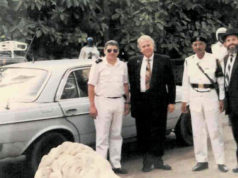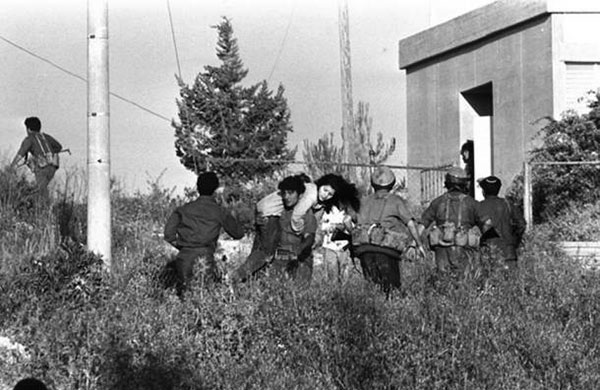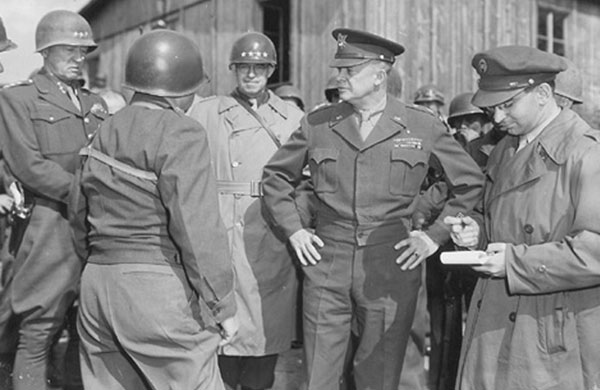June 3, 1974
 Yitzhak Rabin assumed office as the first native born Israeli Prime Minister. Rabin was born in Jerusalem on March 1, 1922. Before he got involved in politics he was an Israeli statesman and soldier. In 1968,after he retired from the army, he became Israel’s Ambassador to the United States, and during this time he formed amazing relationships with many US leaders. In 1974 he was elected prime minister. Throughout his first term he secured a cease fire with Syria in the Golan Heights and he also ordered a raid in Uganda that resulted in taking back Israeli hostages. He didn’t serve a second term until 1992 when he was reelected. He signed a peace treaty with King Hussein of Jordan and received the Nobel Prize for peace in 1994. He was murdered at a peace rally in 1995.
Yitzhak Rabin assumed office as the first native born Israeli Prime Minister. Rabin was born in Jerusalem on March 1, 1922. Before he got involved in politics he was an Israeli statesman and soldier. In 1968,after he retired from the army, he became Israel’s Ambassador to the United States, and during this time he formed amazing relationships with many US leaders. In 1974 he was elected prime minister. Throughout his first term he secured a cease fire with Syria in the Golan Heights and he also ordered a raid in Uganda that resulted in taking back Israeli hostages. He didn’t serve a second term until 1992 when he was reelected. He signed a peace treaty with King Hussein of Jordan and received the Nobel Prize for peace in 1994. He was murdered at a peace rally in 1995.
June 4, 1967
The armies of Egypt, Jordan, Syria, Lebanon, Iraq, Saudi Arabia, and Sudan, along with military contingents from many other Arab and Muslim regimes,were all poised at Israel’s vulnerable borders ready to annihilate the Jewish state. The odds appeared immensely stacked against Israel, and the likelihood of any outside military support seemed remote. Egypt’s president, Gamal Abdul Nasser, who at the time was also president of the United Arab Republic, a union between Egypt and Syria, made the UAR’s position clear when he said “I announce on behalf of the United Arab Republic that we will exterminate Israel.”
As a preventative military effort, in a surprise move, Israel attacked first. Within 6 days Israel had doubled it’s size; had control of the Gaza Strip, the Sinai Peninsula of Egypt, the Golan Heights of Syria and of the west bank and the Arab sector of Eastern Jerusalem. It became known as the 6 Day War.
June 6, 1948
 The Road of Valor was completed. This road is also known as the “Road of Heroism,” a 16 mile road that connects Jerusalem to Tel-Aviv. During the Israeli War of Independence the Israeli army was forced to surrender their hold on the old city to the Arabs. The 100,000 Jews that were living within the city walls became trapped. There was no food or ammunition coming in, and there was no way for people to escape. The city was completely surrounded by Arabs. With no way out, they came up with a plan to transport things in and out of the city. For weeks soldiers and civilian volunteers worked in the dead of night building this road, and in just eight weeks the road was completed and served as Jerusalem’s lifeline.
The Road of Valor was completed. This road is also known as the “Road of Heroism,” a 16 mile road that connects Jerusalem to Tel-Aviv. During the Israeli War of Independence the Israeli army was forced to surrender their hold on the old city to the Arabs. The 100,000 Jews that were living within the city walls became trapped. There was no food or ammunition coming in, and there was no way for people to escape. The city was completely surrounded by Arabs. With no way out, they came up with a plan to transport things in and out of the city. For weeks soldiers and civilian volunteers worked in the dead of night building this road, and in just eight weeks the road was completed and served as Jerusalem’s lifeline.
June 8, 1898
Dr. Henry Periera Mendes, the spiritual leader of the Spanish and Portuguese Synagogue in New York, established the Union of Orthodox Jewish Congregations of America, better known as the OU. It is the largest organization of Orthodox synagogues in the US. The (UOJCA) is best known for its kashrut supervision. Every day, countless Jewish individuals around the world are positively impacted by the work of the Orthodox Union, with its array of religious, youth, social action, educational, public policy and community development services, programs and activities. The OU synagogue network embraces over 400 synagogues across North America, providing professional guidance to their rabbinic and lay leaders. The mission of the OU is to engage, strengthen, and lead the Orthodox Jewish Community, and inspire the greater Jewish community.
June 20, 1391
Four thousand Jews were killed in Toledo, Spain. As early as January, 1391, the prominent Jews who lived in Madrid received information that riots were threatening in Seville and Cordova. Ferrand Martinez encouraged the people of Spain to kill the Jews or baptize them. In June a mob attacked the Juderia (the Jewish quarter)in Seville from all sides and killed 4,000 Jews; the rest submitted to baptism as the only means of escaping death.



